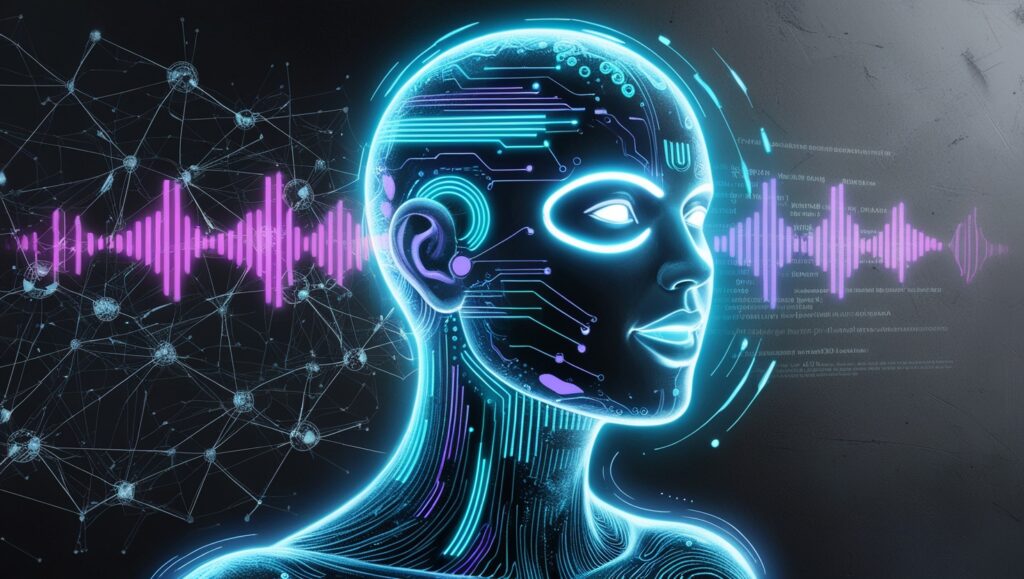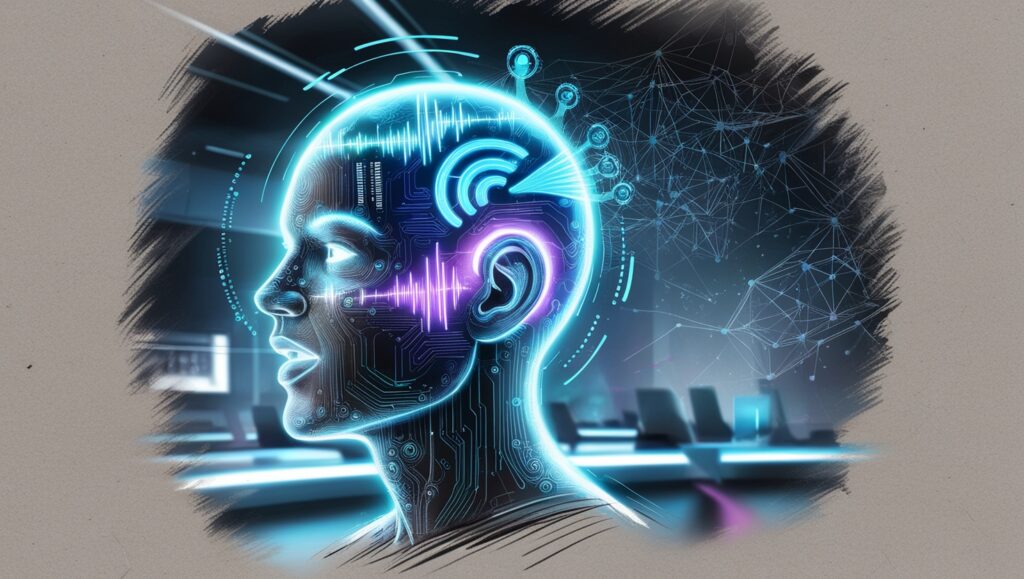How Does AI Generate Human-Like Voices? 2025
How Does AI Generate Human-Like Voices? 2025
Artificial Intelligence (AI) has made incredible advancements in speech synthesis. AI-generated voices now sound almost indistinguishable from real human speech. But how does this technology work? What makes AI-generated voices so natural, expressive, and lifelike?
In this deep dive, we’ll explore:
✔ The core technologies behind AI voice generation.
✔ How AI learns to mimic human speech patterns.
✔ Applications and real-world use cases.
✔ The future of AI-generated voices in 2025 and beyond.
Understanding AI Voice Generation
At its core, AI-generated speech relies on deep learning models that analyze human speech and generate realistic voices. These models use vast amounts of data, phonetics, and linguistic patterns to synthesize speech that mimics the tone, emotion, and natural flow of a real human voice.
1. Text-to-Speech (TTS) Systems
Traditional text-to-speech (TTS) systems used rule-based models. However, these sounded robotic and unnatural because they couldn’t capture the rhythm, tone, and emotion of real human speech.
Modern AI-powered TTS uses deep learning and neural networks to generate much more human-like voices. These advanced models process:
✔ Phonetics (how words sound).
✔ Prosody (intonation, rhythm, stress).
✔ Contextual awareness (understanding sentence structure).
💡 Example: AI can now pause, emphasize words, and mimic real human speech patterns instead of sounding monotone.




2. Deep Learning & Neural Networks
AI speech synthesis is driven by deep neural networks (DNNs), which work like a human brain. These networks analyze thousands of real human voice recordings and learn:
✔ How humans naturally pronounce words.
✔ The pitch, tone, and emphasis of speech.
✔ How emotions impact voice (anger, happiness, sadness, etc.).
Some of the most powerful deep learning models include:
WaveNet (Google DeepMind)
Developed by Google DeepMind, WaveNet uses a deep neural network that analyzes raw audio waveforms. It produces natural-sounding speech with realistic tones, inflections, and even breathing patterns.
Tacotron & Tacotron 2
Tacotron models, developed by Google AI, focus on improving:
✔ Natural pronunciation of words.
✔ Pauses and speech flow to match human speech patterns.
✔ Voice modulation for realistic expression.
3. Voice Cloning & Deepfake Voices
One of the biggest breakthroughs in AI voice synthesis is voice cloning. This technology allows AI to:
✔ Copy a person’s voice with just a few minutes of recorded audio.
✔ Generate speech in that person’s exact tone and style.
✔ Mimic emotions, pitch, and speech variations.
💡 Example:
If an AI listens to 5 minutes of Elon Musk’s voice, it can generate full speeches in his exact tone and speech style. This is called deepfake voice technology.
🔴 Ethical Concern:
This technology can be used for fraud and misinformation, like creating fake political speeches or scam calls that sound real.
How AI Learns to Speak Like Humans
AI voice synthesis follows three major steps:
Step 1: Data Collection & Training
AI systems collect millions of human speech recordings to learn:
✔ Pronunciation of words in different accents.
✔ Pitch, tone, and emotional expression.
✔ How people emphasize words naturally.
💡 Example: AI listens to how people say “I love this product!” and learns how different emotions change the way it sounds.
Step 2: Neural Network Processing
AI breaks down voice data into small sound units (phonemes) and reconstructs them into natural-sounding speech. It then:
✔ Creates realistic sentence structures.
✔ Adds human-like pauses, stresses, and tonal changes.
✔ Removes robotic or unnatural elements.
Step 3: Speech Synthesis Output
After processing, AI generates speech that sounds fluid, emotional, and human-like. Modern AI can now:
✔ Imitate accents and speech styles.
✔ Adjust pitch and tone in real time.
✔ Change emotional expressions (happy, sad, excited).
Real-World Applications of AI-Generated Voices
AI-generated voices are transforming multiple industries:
1. Voice Assistants (Alexa, Siri, Google Assistant)
AI voice assistants now sound more natural, conversational, and human-like than ever before. They can:
✔ Understand context and respond naturally.
✔ Adjust tone based on conversation flow.
✔ Speak in different accents and languages.
2. Audiobooks & Voiceovers
Instead of hiring voice actors, AI-generated voices can now:
✔ Narrate entire audiobooks in human-like voices.
✔ Adjust voice tone based on story emotion.
✔ Sound different for each character in a book.
💡 Example: AI-generated voices are now used for animated movies, YouTube videos, and podcasts.
3. Customer Service & Call Centers
Companies use AI voices for automated customer support, reducing costs and improving efficiency. AI voice systems:
✔ Respond naturally to customer questions.
✔ Understand emotional tone in conversations.
✔ Adjust voice tone based on urgency.
💡 Example: Banks use AI voice bots for automated fraud detection calls.
4. AI-Generated Speech for Disabled Individuals
AI voice synthesis is helping people who have lost their voice due to medical conditions. AI-generated speech allows them to:
✔ Type text and have AI speak for them.
✔ Use their own cloned voice for communication.
✔ Improve accessibility for those with speech impairments.
💡 Example: AI helped Stephen Hawking communicate using a computer-generated voice.
The Future of AI-Generated Voices in 2025 & Beyond
AI-generated speech is evolving fast. Here’s what’s next:
1. Fully Realistic Conversational AI
By 2025, AI voices will sound completely human, making robots and AI assistants indistinguishable from real humans.
2. Real-Time AI Voice Translation
AI will soon allow real-time speech translation in different languages while keeping the original speaker’s voice and tone.
💡 Example:
A Japanese speaker’s voice can be translated into English, but still sound like their real voice.
3. AI Voice in the Metaverse & Virtual Worlds
AI-generated voices will power realistic avatars in virtual worlds, enabling:
✔ AI-powered characters with human-like speech.
✔ AI-generated narrators in VR experiences.
✔ Fully voiced AI NPCs in video games.
Final Thoughts
AI-generated voices have reached an incredible level of realism. From voice assistants to deepfake voice cloning, AI is revolutionizing how we interact with technology.
However, ethical concerns remain. With the ability to clone voices and create deepfake speech, AI-generated voices must be used responsibly.
In the future, AI will likely replace human voice actors, power next-gen customer service, and enable lifelike AI assistants. But one thing is clear—AI-generated voices are becoming indistinguishable from real humans.
Read Our Past Blog: What If We Could Live Inside a Black Hole? 2025
For more information, check this resource.
How Does AI Generate Human-Like Voices? 2025 – Everything You Need to Know
Understanding ai in Depth
Related Posts
Related Posts
Related Posts
Related Posts
Is Student Boredom a Crisis in Schools Today?
https://edgythoughts.com/is-student-boredom-a-crisis-in-schools-today/
What If We Could Live Forever Using Genetic Engineering 2025
https://edgythoughts.com/what-if-we-could-live-forever-using-genetic-engineering-2025/







One Comment